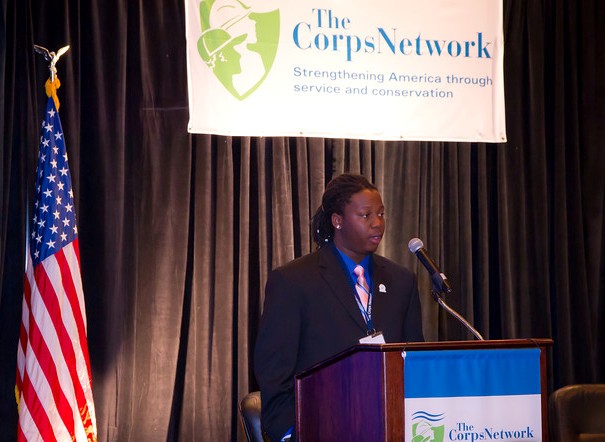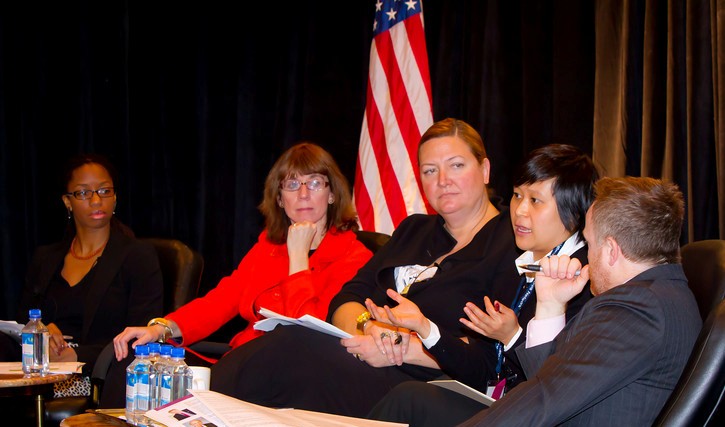
Brandon Penny, a 2013 Corpsmember of the Year, starts off the session with an inspiring speech.
Over 6 million young Americans are unemployed or not in school. Years of research and experience have yielded important knowledge about the best ways to tackle this problem, but we still continue to learn and adapt our methods of approaching the causes of unemployment. In the second plenary of The Corps Network 2013 National Conference experts and thought leaders from partnering organizations discussed their own experiences and successes in the areas of education and workforce development. These speakers also shared their thoughts about certain aspects of the battle against youth unemployment that could still use improvement.
Speakers in this session included Jennifer Troke, Chief of the Division of Youth Services, Employment and Training Services with the U.S. Department of Labor; Livia Lam, Senior Labor Policy Advisor with the House Committee on Education and the Workforce; Elizabeth Clay Roy, Deputy Director of Opportunity Nation; and Patrice Cromwell, Director of Economic Development and Integration Initiatives with the Annie E. Casey Foundation. The conversation was moderated by Thaddeus Ferber, Vice President of Policy at the Forum for Youth Investment.
At the opening of the plenary, we heard from Brandon Penny, a 2013 Corpsmember of the Year whose story of success echoed many of the themes that the plenary speakers covered. Brandon shared his story of finding the Civicorps Learning Academy in Oakland, California after he dropped out of high school. Brandon found great success at Civicorps; he gained the respect of his peers and his superiors, earned his high school diploma, and got a job as a truck driver for the Corps’ recycling program.

Left to Right: Elizabeth Clay Roy, Patrice Cromwell, Jennifer Troke, Livia Lam, Thaddeus Ferber
Patrice Cromwell specifically talked about the research of The Annie E. Casey Foundation about “disconnected” or “Opportunity Youth” and the long-term impacts of having so many young people out of school and unemployed (see slides). Elizabeth Clay Roy then spoke about the Opportunity Index created by Opportunity Nation that correlates a number of key variables that can indicate how growing up in a specific zipcode can affect a person’s chances to have success in life. The percent of youth who were disconnected had the strongest correlation with the final Opportunity Score for a zipcode.
The next speakers focused on methods that the federal government is working to help alleviate the problem of youth unemployment. Livia Lam spoke about the opportunities and challenges in passing the Workforce Investment Act, while Jennifer Troke spoke about the youth programs and funding streams administered by the Department of Labor (see slides). Connecting Corps programs to these funding possibilities via Workforce Investment Boards is a project that was mentioned and also covered in a workshop by The Corps Network’s partners at the National Association of Workforce Boards.





































































